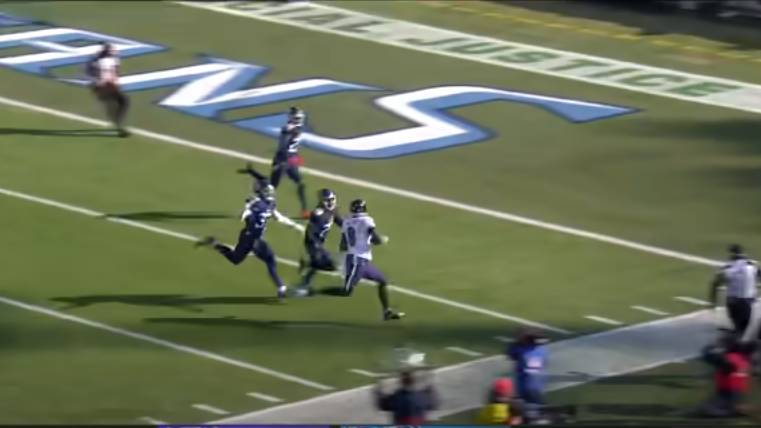How did ‘pocket passer’ quarterbacks come to rule the league?
Pocket passers — QBs who stand in the ‘pocket’ behind the offensive line and simply throw — weren’t always typical for the position. Then they were. Now it appears they are again fading away.
But how did the ‘pocket passer’ come to rule the league?
When the NFL was founded in 1920, there were rules against players playing only one side. In other words, everyone had to play Special Teams, Offense, and Defense.
For example, Sammy Baugh, who played for the team formerly known as the Redskins from 1937 to 1952, is most known for playing quarterback, but he also played defensive back and punter and was successful at both.
Back then, the best QB’s were athletic and usually the best athletes on the field. But when the NFL made it legal to specialize, the NFL started to mostly employ pocket passers who had good feet for within the pocket but couldn’t do much as runners. They focused on passing.
The 3 Types of Quarterbacks
I believe that there are three types of quarterbacks. The first is the already mentioned pocket passer. Think of Tom Brady, Bart Starr, Drew Brees, Joe Montana.
The second is mobile quarterbacks. They are pass-first QBs, but are athletic enough to run for yards and escape pressure through running. A key thing to define these types of quarterbacks is they don’t get very many designed runs but do get quite a bit of yards on the ground. An example of these types of quarterbacks is Russell Wilson, Deshaun Watson, Patrick Mahomes, and even Kyler Murray. I think Kyler Murray is kind of in between this category and the next because, even though he is usually one of the most athletic players on the field, he does not get many designed runs. But he does get more than the others and I would say he is more dangerous with his legs than any of the others.
Third, we have the topic of this article, athletes-at-quarterback. These players have tons of designed runs and the running game depends on them to get going. An obvious example of this is Lamar Jackson. But don’t forget Michael Vick, Josh Allen, and Cam Newton.
Recent History of the Athlete-at-Quarterback Era
Mobile quarterbacks really started to come into the NFL during the 2012 NFL Draft. Robert Griffin, Andrew Luck, and Russell Wilson can all move but the run game wasn’t built around them.
They brought a new excitement to the game. Would they pass the ball 50 yards down the field, or see green and accomplish an explosive run?
This keep-them-guessing offense confused defenses and excited crowds. Suddenly the Seahawks gained fans nationwide as Wilson created magical plays with his arms and legs — and eventually ran over the Broncos in a 43-8 Superbowl win.
Can an Athlete-at-Quarterback Last?
This athletes-at-QB phase that is emerging has one big flaw: we don’t know how long they can produce while relying heavily on running the ball.
Russell Wilson is the only one still playing at a high level from this first round of mobile quarterbacks. Cam Newton, pre-dating Wilson by a year, has declined since his MVP season when he was the center of the Panthers running game.
One thing we know is that speed will decline with age. We won’t see a 40-year-old QB still breaking ankles as Lamar does every game. So, when their legs slow down, will they be able to rely on their arms?
Wilson is maybe the best example of a mobile-quarterback-turned-passer. He can’t run like he used to, but at times he has the top passer rating in the league. Other athletes-at-quarterback will have to do the same to have staying power.
So how are these younger QBs doing so far?
Even now, I would argue that Josh Allen and Lamar Jackson are very good passers. Lamar still has to work on his deep ball, he is only 24. The thing is, he is one of the most efficient passers I have seen. He doesn’t have to pass for 4,000 yards to throw for 25 touchdowns like most quarterbacks. And while it does help to have the best running game behind you, he is the center of the running game, which is backed up by the fact he has two out of the three 1,000-rushing-yard campaigns by a QB in the history of the NFL.
He will get better as a passer as he gets older but I don’t see him slowing down in speed for a while so its scary to think how long he could be tormenting defenses. However by the time he’s 30 I hope he can drop back more. He just can’t take that many hits or else he will get hurt eventually.
Finally, Josh Allen has literally the strongest arm in the NFL. But his size and athleticism makes him a different story than Lamar. His size and speed are nearly a clone of Cam Newton, but he does have a better arm than Cam has. He is a power runner at quarterback and, if you look into the history book, that is what the original NFL had at quarterback.
Mobile Quarterbacks vs Pocket Passers: Which is the Future of the NFL?
If I were an NFL GM, I would be looking for the next Lamar Jackson or Josh Allen. This is where the game is going, and if you want to win Superbowls, you’re going to have to embrace the new athlete-at-quarterback era.
Image: YouTube / Rookie Highlights

